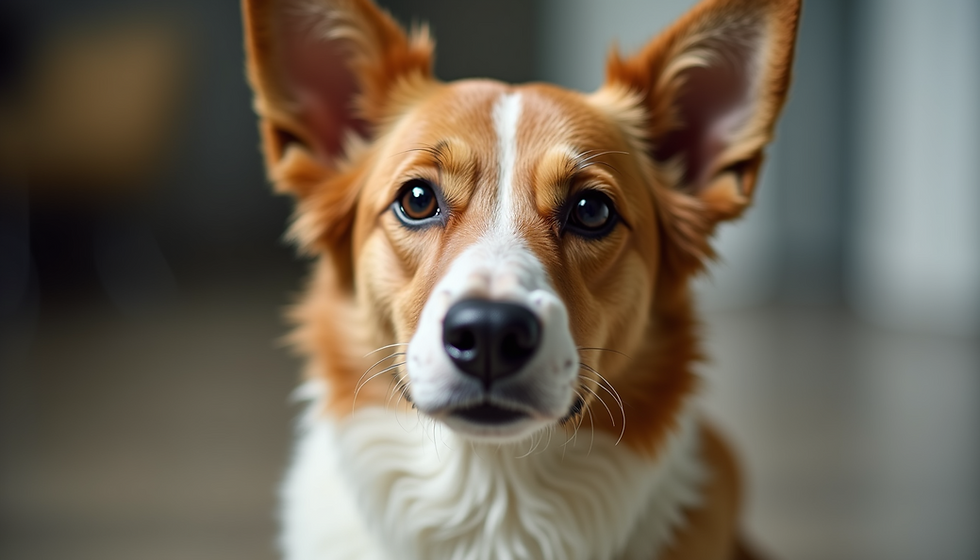Top Techniques to Train Your Dog Effectively
- Bradford Dean
- Sep 24
- 4 min read
Training your dog effectively is essential for building a strong bond and ensuring your furry friend behaves well in various situations. Whether you have a new puppy or an older dog, using the right techniques can make the training process smoother and more enjoyable for both of you. This guide will walk you through proven methods to help you train your dog with confidence and success.
Understanding the Basics of Effective Dog Training
Effective dog training starts with understanding your dog's behavior and communication style. Dogs respond best to clear, consistent commands and positive reinforcement. Here are some foundational principles to keep in mind:
Consistency is key: Use the same commands and signals every time.
Short training sessions: Keep sessions between 5 to 15 minutes to maintain your dog’s attention.
Positive reinforcement: Reward good behavior with treats, praise, or playtime.
Patience and calmness: Avoid punishment or harsh tones, which can confuse or scare your dog.
For example, when teaching your dog to sit, say the command clearly, wait for them to comply, and immediately reward them. Repeating this consistently will help your dog associate the command with the action and the reward.

Proven Techniques for Effective Dog Training
There are several techniques that have been tested and proven effective for training dogs. Here are some of the most popular and reliable methods:
1. Clicker Training
Clicker training uses a small device that makes a clicking sound to mark the exact moment your dog performs the desired behavior. This method helps your dog understand what action earned the reward.
Start by associating the clicker sound with treats.
Use the clicker immediately when your dog performs the correct behavior.
Follow the click with a treat or praise.
2. Positive Reinforcement
This technique focuses on rewarding good behavior rather than punishing bad behavior. Rewards can be treats, toys, or verbal praise.
Identify what motivates your dog.
Reward immediately after the desired behavior.
Ignore unwanted behavior instead of punishing it.
3. Modeling and Mimicking
Dogs often learn by watching others. If you have more than one dog, the less trained dog can learn by observing the trained dog’s behavior.
Use a well-trained dog to demonstrate commands.
Reward both dogs to encourage learning.
4. Crate Training
Crate training helps with housebreaking and provides your dog with a safe space.
Introduce the crate as a positive place with treats and toys.
Gradually increase the time your dog spends in the crate.
Never use the crate as punishment.
Using these techniques consistently will help you achieve effective dog training results.

What are the 4 F's of Dog Training?
The 4 F's of dog training are fundamental concepts that guide trainers in shaping a dog’s behavior effectively. They are:
1. Focus
Getting your dog’s attention is the first step in training. Use their name or a specific cue to direct their focus to you.
2. Follow
Once your dog is focused, encourage them to follow your commands or lead. This builds trust and cooperation.
3. Feel
Understanding your dog’s emotions and body language helps you respond appropriately. Training should be a positive experience that makes your dog feel safe and happy.
4. Finish
Always end training sessions on a positive note. Reward your dog and give them a break to reinforce good behavior.
By applying the 4 F's, you create a structured and empathetic training environment that fosters learning and strengthens your relationship.
Tips for Overcoming Common Training Challenges
Training a dog is not always straightforward. You may encounter challenges such as distractions, stubbornness, or fear. Here are some practical tips to overcome these obstacles:
Distractions: Start training in a quiet environment and gradually introduce distractions.
Stubbornness: Use high-value treats and keep training sessions short and fun.
Fear or anxiety: Be patient and avoid forcing your dog into uncomfortable situations. Use gentle encouragement and positive reinforcement.
Inconsistent behavior: Make sure all family members use the same commands and rules.
Remember, every dog learns at their own pace. Celebrate small victories and stay committed to the process.

Enhancing Your Training with Expert Dog Training Tips
To maximize your training success, consider incorporating expert dog training tips into your routine. These tips often include advice on timing, reward types, and how to read your dog’s signals effectively.
Use a variety of rewards to keep your dog motivated.
Be mindful of your body language; dogs are very perceptive.
Practice commands in different locations to generalize behavior.
Keep a training journal to track progress and setbacks.
By integrating these insights, you can tailor your training approach to your dog’s unique personality and needs.
Building a Lifelong Bond Through Training
Training is more than teaching commands - it’s about building a lifelong bond with your dog. Effective dog training creates a foundation of trust, respect, and communication. It helps your dog feel secure and confident, which leads to a happier and healthier life together.
Make training a daily habit, celebrate your dog’s progress, and enjoy the journey of learning and growing together. With patience and the right techniques, you can transform your dog into a well-behaved and joyful companion.
Start today and watch your dog thrive with effective dog training!

$50
Product Title
Product Details goes here with the simple product description and more information can be seen by clicking the see more button. Product Details goes here with the simple product description and more information can be seen by clicking the see more button

$50
Product Title
Product Details goes here with the simple product description and more information can be seen by clicking the see more button. Product Details goes here with the simple product description and more information can be seen by clicking the see more button.

$50
Product Title
Product Details goes here with the simple product description and more information can be seen by clicking the see more button. Product Details goes here with the simple product description and more information can be seen by clicking the see more button.




Comments